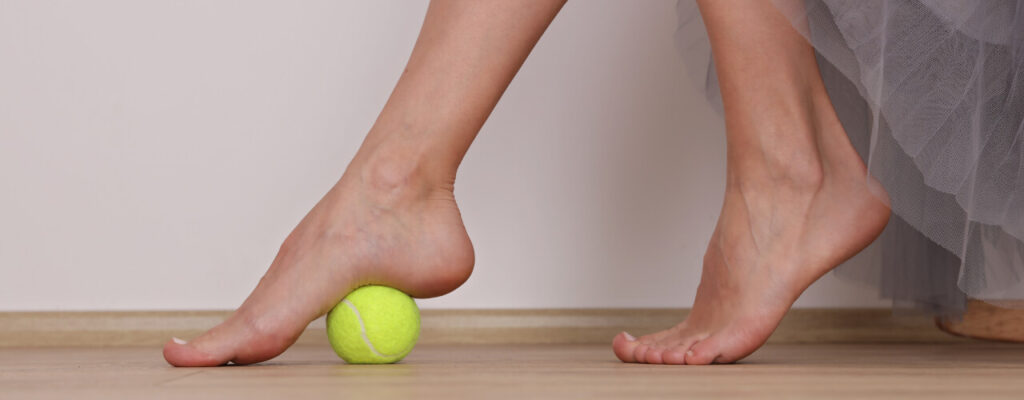Are You Flat Footed?
Flat feet can be caused by a variety of factors, including genetics, age, and weight, and they can also result in painful body issues.
A physical therapist can treat and recommend simple lifestyle changes such as muscle lengthening and strengthening exercises, arch-lifting shoes and insoles, and posture building exercises, in order to engage and strengthen the feet, legs, and core.
Those with flat feet should consult with a physical therapist to determine what treatment methods would be best to relieve pain and improve body mechanics. Contact us today to learn more!
Custom orthotics: a solution for flat feet
There is a chance that your physical therapist may recommend custom orthotics to help with your flat feet. There are many benefits to using custom orthotics, including:
- Potential surgical prevention. In some cases, a custom orthotic may help you avoid an invasive surgical procedure altogether due to your flat feet. With surgery, you always run the risk of blood clots, infection, and a lengthy recovery time. Fortunately, it is possible that an orthotic device can correct a problem without the need for surgery at all. Your physical therapist can also provide you with targeted therapeutic exercises that will help your body speed up its natural healing process. While surgery is sometimes unavoidable, it’s almost always better to eliminate the need for an invasive procedure if the problem can be treated with a custom device.
- Physical enhancement. Orthotic devices can help you move in ways you may have thought were lost. Your physical therapist can help you enhance your performance and give you advice on the proper forms and techniques of movement with your new device. If you are looking to get back into the activities you love, it is likely that a custom orthosis can help you achieve that. You and your physical therapist will work together to create a treatment plan that will help you reach your goals, and he or she will assist you in increasing your strength, endurance, and flexibility with your new custom device.
- Injury prevention. Custom orthotic devices can help aid you in avoiding injury by allowing your body to move more freely and comfortably. Your physical therapist can also teach you several different exercises you can do with your custom device to make sure your feet are still maintaining strength and function. If you’re recovering from a surgical procedure for any reason, your physical therapist will help you learn to maneuver with your new device in new ways that will help you stay active while reducing the chance of falls and injury during your recovery.
- Shortened recovery. Custom orthotics can help you recover quickly from the pain or injury caused by your flat feet. Your physical therapist can also put together a rehabilitation program that specifically addresses your needs, focusing on helping you recover as quickly as possible. This may include strength and range of motion exercises, in addition to your custom device.
Arches: why are they so important?
Arches are what provide elasticity and flexibility, allowing the middle of the foot to spread and contract. Arches absorb shock and contribute to the strength and balance of the foot.
Arches also aid in the distribution of weight evenly across the entire foot. When the foot is flat, the rest of the body has to compensate for the lack of arch, putting additional strain on the feet, knees, and back, causing inflammation and pain.
What can a physical therapist do for my flat feet?
When you arrive for your appointment, your physical therapist will examine your specific problems to determine the big picture. They will explain how the feet are the foundation of the entire body and how maintaining their strength will help alleviate pain throughout the body, including ankle, knee, and back pain.
Footwear with substantial arch support, insoles to relieve foot pressure, daily stretching exercises for both the feet and legs, ice therapy to reduce inflammation, physical therapy to correct walking patterns, and even ankle braces or injections are some common ways to treat flat feet. Your physical therapist can prescribe the necessary treatments for your specific needs.
Flat feet, explained
According to Healthline,
“Flat feet (pes planus) are commonly known as fallen or collapsed arches. It’s a relatively common condition that can affect up to 30 percent of the population, causing symptoms in 1 in 10 of these people. Usually, both feet are affected, but it’s possible to have a fallen arch on only one foot.
Flat feet are caused by a variety of conditions including injuries, obesity, and arthritis. Aging, genetics, and pregnancy can also contribute to flat feet. You’re also more likely to have flat feet if you have a neurological or muscular disease such as cerebral palsy, muscular dystrophy, or spina bifida.”
There are many different stretches you can do to help relieve the pain of flat feet, including:
- Towel curls
- Heel stretches
- Calf raises
- Toe raises
- Tennis/golf ball rolls
- Stair arch raises
- Arch lifts
Relieve flat footed pain with physical therapy
If you have flat feet, relief may be just around the corner! Contact us right away to schedule a consultation and take the first steps toward relief.
Sources:
Tags: physical therapy, foot pain




